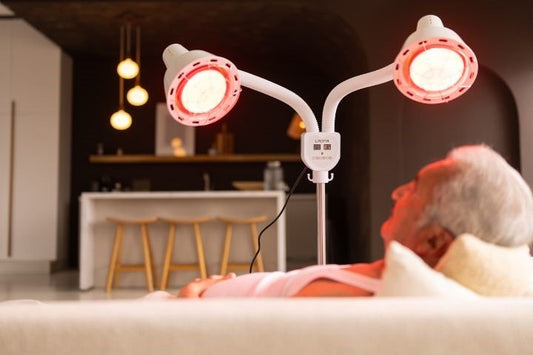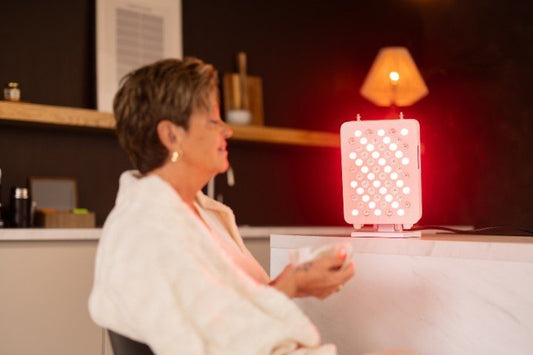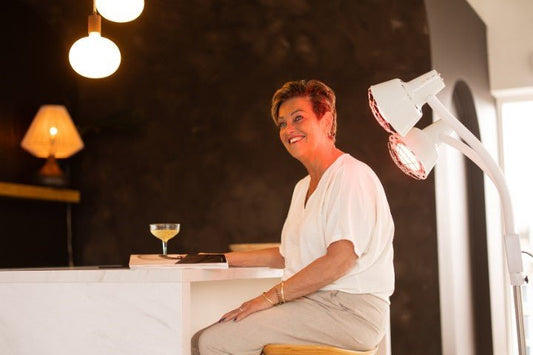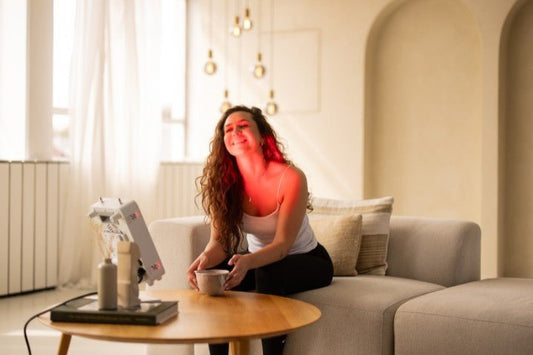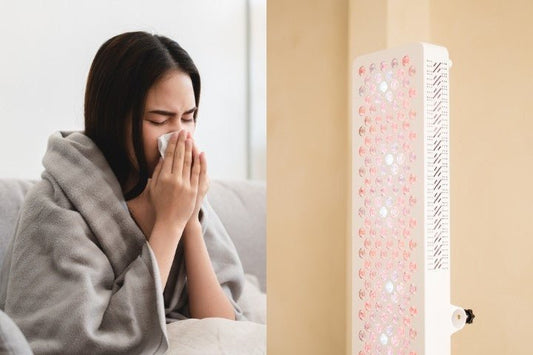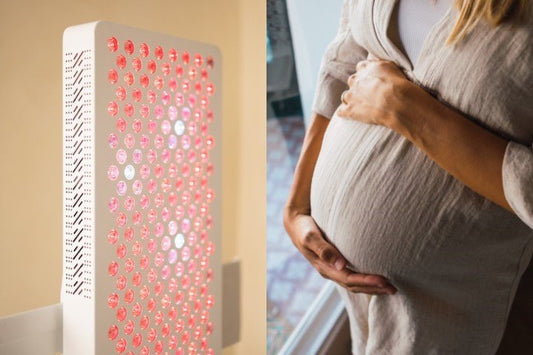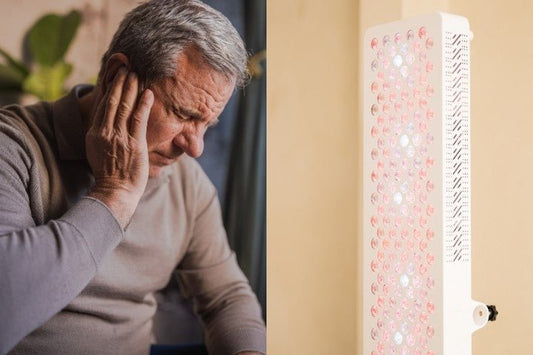Your skin itches, redness appears, and you wonder: is there something that truly helps with eczema? Red light therapy might just be what you're looking for. In this blog, you'll discover how it works and, more importantly whether it can really make a difference.
Note: The following content is not medical advice. It is based on our own insights, customer experiences, and various online sources.
Table of Contents
What is eczema and how can you recognize it?
Can light therapy relieve my symptoms?
How does red light soothe eczema?
User guide: how to use red light panels
Frequently asked questions

What is eczema and how can you recognize it?
Eczema is a common and persistent skin condition that can affect people of all ages. While it often starts in childhood, it can develop at any time. In cases of atopic eczema, the skin becomes easily irritated by external triggers, leading to recurring inflammation.
Due to constant itching and irritation, eczema significantly impacts daily life. It causes not just physical discomfort but also emotional stress and embarrassment. And the downside? It rarely goes away on its own.
What causes eczema?
The exact cause is still unknown, but it's believed to result from a combination of factors:
- Weakened skin barrier: a lack of ceramides (natural fats in the skin) causes moisture loss, making the skin vulnerable to irritants.
- Overactive immune system: reacts to harmless triggers as if they were threats, causing inflammation.
- Genetics: eczema often runs in families.
- Environmental triggers: such as pollen, dust mites, skin products, or rough fabrics.
- Psychological stress: stress or emotions can trigger or worsen flare-ups.
How do I recognize eczema?
Symptoms vary per person, but common signs include:
- Severe itching (especially at night)
- Red, inflamed skin
- Dry, flaky patches
- Small bumps or blisters
- Crusting or skin cracks from irritation
- Thickened skin from frequent scratching (lichenification)

Can light therapy relieve my symptoms?
Light therapy is becoming increasingly popular as a natural treatment for a range of issues, from muscle recovery to skin problems. Many people are discovering the benefits of red light. But how does it actually work? And can it truly help with eczema?
What is red light therapy?
Red light therapy, also known as photobiomodulation (PBM), uses low-level light to positively influence biological processes. Unlike UV light, this light is not harmful. In fact, it reduces inflammation and promotes skin cell repair.
The therapy uses various light wavelengths:
- Red light (620–700 nm): targets the upper skin layers, ideal for eczema.
- Near-infrared light (700–1100 nm): penetrates deeper tissues, less effective for surface issues.
What wavelengths are used?
Different wavelengths offer distinct benefits:
- 630 nm (red): boosts collagen, reduces inflammation, and improves skin texture.
- 660 nm (red): penetrates slightly deeper, aids wound healing, and reduces redness.
- 830 nm (near-infrared): helps deep tissue recovery and pain relief.
- 850 nm (near-infrared): supports muscle repair and enhances ATP production in cells.
Why red light and not infrared?
Though often mentioned together, red and infrared light have different applications. Eczema affects the top layers of the skin, where red light works best.
Infrared light penetrates deeper and is better suited for muscle or joint pain. For skin issues, red light is the ideal option.

How does red light soothe eczema?
Studies show that red light has anti-inflammatory properties and promotes skin regeneration. Benefits for eczema sufferers include:
- Reduction of redness, itching, and flaking
- Strengthening of the skin barrier to prevent irritation
- Cell regeneration stimulation for faster healing
Red light reaches deep into cells and activates mitochondria, the energy centers of our cells. This improves cell energy, accelerating recovery and reducing inflammation.
Discover our red light therapy lamps
Additional skin benefits of red light
Beyond easing eczema, light therapy can improve skin in other ways:
- Acne: kills bacteria and reduces inflammation
- Fine lines and wrinkles: boosts collagen through fibroblast activity
- Hyperpigmentation and aging: evens skin tone and encourages skin renewal

User guide: how to use red light panels
To get the best results from light therapy, it's important to use it correctly. Here's how to do it safely and effectively:
1. Frequency
We recommend using red light therapy 3 to 5 times a week. Mild symptoms may improve with just two sessions, but consistency is key for lasting effects.
2. Duration
Each session should last between 10 and 20 minutes, depending on the device and light intensity. More time doesn't always mean better results.
3. Distance from skin
Place the panel about 15 to 30 cm away from the skin. Ensure the light shines directly on bare skin—no clothes or bandages.
4. Safe usage tips
- Wear eye protection when treating the face or working close to the eyes.
- Follow the manufacturer's instructions carefully.
- Apply only on clean skin—free of creams or makeup.
- If redness or irritation occurs, skip a day and monitor your skin.
Want to dive deeper into red light safety? Read our blog: Is light therapy safe and are there side effects?

Frequently Asked Questions
How soon will I see results?
Most users notice relief from itching, redness, and dryness within 2 to 4 weeks. This depends on the severity of the eczema and the consistency of use.
Can I combine red light with other treatments?
Yes, red light panels are usually safe to combine with creams or medication. However, consult your doctor if you're using light-sensitive products.
Does red light therapy work for all types of eczema?
It’s most effective for surface-level types like atopic dermatitis. If the skin is extremely dry or cracked, apply a neutral cream before use for better results.
Is red light safe for children?
Red light is generally safe for children, but always consult a doctor first. Children's skin is more sensitive and needs extra care and supervision.




